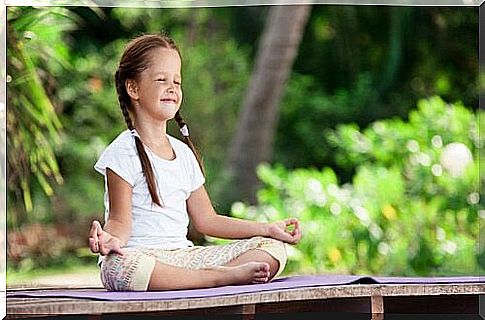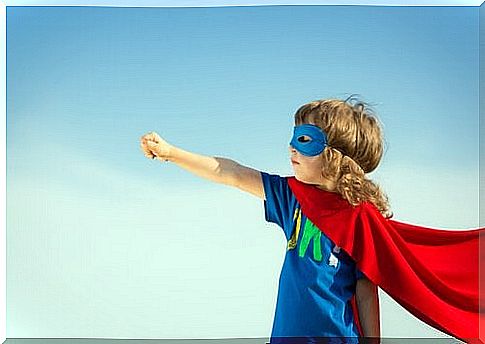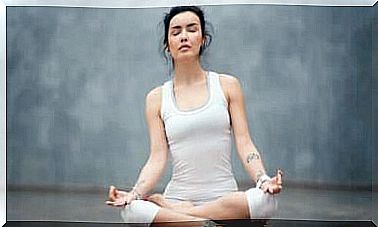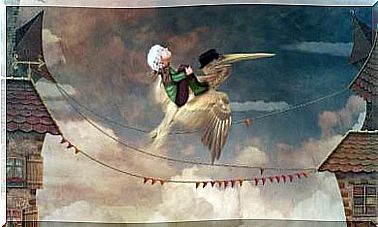Mindfulness For Children: Learning To Direct Emotions

Mindfulness for children opens up a world of possibilities to help children be healthy and happy. It can improve their attention and train their brains in empathy, tranquility and emotional mastery. When we start our little ones in the world of meditation, it is also easier for them to keep in touch with themselves. The idea is that they can more easily adapt to any situation, especially those they face on a daily basis.
We know that mindfulness offers many benefits during our complex adult daily lives. Because the things we deal with professionally and personally affect us. They add stress and anxiety to our lives. To deal with this, strategies such as meditation and mindfulness are helpful, cathartic, and effective.
Mindfulness and other techniques are so helpful for adults. Why don’t we teach it to children too? It is interesting to know that there are already many schools around the world that use this practice in the classroom. In the daily routine in the classroom, they add exercises that include breathing, meditation, and mindfulness. These exercises help the children to achieve the milestones in their development more easily.
But it is important that we establish this kind of practice from an early age. For example, we all know how difficult it can be to do relaxation exercises with high school students for the first time. But in schools where mindfulness is part of the daily schedule, children see it as normal as early as ages three and four. They are used to spending time in silence or concentrating on their breathing. In that sense, they have an edge and can progress more quickly in the development of other abilities.
Let’s take a look at how and in what way we can help children get started with this vast and extremely beneficial practice…
The benefits and challenges of mindfulness for children
Many countries with well-developed educational systems recognize the benefits of mindfulness for children. The United Kingdom, Canada, the Netherlands, the United States, and Australia all have plans to include it in the mainstream curriculum. By 2020, the practice of mindfulness for children should be present in every school. Currently they are gradually teaching it to very young children. The goal is to take advantage of the receptive brains of young children.
If you’re wondering what the best age is to start practicing mindfulness, we need to emphasize one small detail. The ideal age to start is around three years old. But if we want to get results, we have to be consistent so that it becomes a habit. Because then it will sustain itself. Let’s take a closer look at this idea.
I am interested in the world around me
The main purpose of mindfulness for children is to arouse their curiosity and attention. Because we don’t want their ability to be amazed ever to fade. The same goes for their interest in connecting with the outside world from their receptive, relaxed inner self full of confidence.
I am more aware of my surroundings
The ability to better focus their attention on specific things also improves concentration. This is the key in our overstimulated world. For small children do not have stable or reasonable filters to direct their sensory overwhelm.
I understand, control and direct negative emotions
On the other hand, as we mentioned earlier, mindfulness is more than a set of practices for adopting a way of life. His techniques, philosophy and focus can bring about changes in us that change our view of things.
Children, in turn, will be better able to direct their negative emotions from an early age. They will understand where their anger and sadness come from. As a result, they will be able to control it properly. That will then improve their social skills and the way they interact with other people. As a result, they will be able to avoid violent and aggressive situations in the classroom.

Mindfulness for Kids: Enjoyable and Helpful Strategies to Get Them Started
Before we begin, there is something important that we need to clarify. Mindfulness for children is not limited to teaching them how to meditate, relax and breathe. It goes much deeper than that. Because we must not forget that mindfulness is also linked to diet, work, relationships and even sport! Now let’s see what kind of strategies we can develop to integrate this philosophy into children’s lives. There are two requirements: it must be fun and simple. These are some strategies we can use with children between the ages of three and six.
I’m Superman or Wonder Woman
- You start by telling the kids to get into a “power pose” like they’re superheroes. They should stand with their backs straight, hands on their backs, and most importantly, eyes closed.
- They will turn into superheroes with super senses!
- In complete silence they now listen to all the sounds around them for five minutes. So they have to be very vigilant and relaxed. Because that way, no matter how small they are, they can turn their radar systems in the direction of all sounds…

With my stuffed animal I learn to breathe
Nothing is better than a stuffed animal to learn to breathe. Follow these guidelines.
- The time to take a nap is a perfect time to teach them to breathe relaxed.
- Tell the children to place their stuffed animal or doll on their stomach.
- Then tell them to breathe in through their noses for a count of four. They should also watch their bellies and their stuffed animal rise on their stomachs.
- They have to hold their breath for three seconds. Then they exhale through the mouth. Tell them to watch their stuffed animal sink back down on the exhale.
The weather and my emotions
Sitting Still Like a Frog is a beautiful book by Eline Snel. In the book, she offers interesting strategies that parents can use to meditate with their children. The author also provides an interesting strategy to help children recognize their emotions. She recommends using the weather to teach children how to connect with their emotions (sadness, anger or joy).
- To do this, we tell them that they are going to play the weatherman’s game.
- They should close their eyes and ask themselves “what is the weather like in me today?” When the weather is sunny, I feel okay. If it rains, I’m sad. If I’m a storm with lightning, it’s because I’m angry.
The “we notice” walk
Mindfulness for kids doesn’t just happen while they’re sitting. Because our little ones are active and often react. They are eager to experience things. Plus, they’re insatiably curious. Small children need physical contact, games and constant interaction. So we need to adapt mindfulness to their daily needs and pace.
We can do a very effective exercise with them every day, the “we notice” walk. After school or when you are out and about, encourage them to notice their surroundings. You can then say things like “I imagine that…,” “I see that…” or “I discover that…”.
The idea is to encourage them to open up to their environment. It doesn’t matter how small or unimportant things may seem. “I notice that far away I hear someone laughing,” “I noticed that man looked sad,” “I imagine hearing a baby bird in its nest crying for its mama,” “I see a cloud covering the sun darkens…”
Finally, we would like to mention that we know that there are many, many more mindfulness practices that we can teach our children. Look for the exercises that best suit their personality and age. Also, don’t forget that we need to lead by example in terms of calmness, balance and long-lasting affection.
References
Fast, Eline (2013). Sitting Still Like a Frog, Madrid: Kairós.
Vara de Rey, P. Mindfulness for Children, Barcelona: Planeta.









